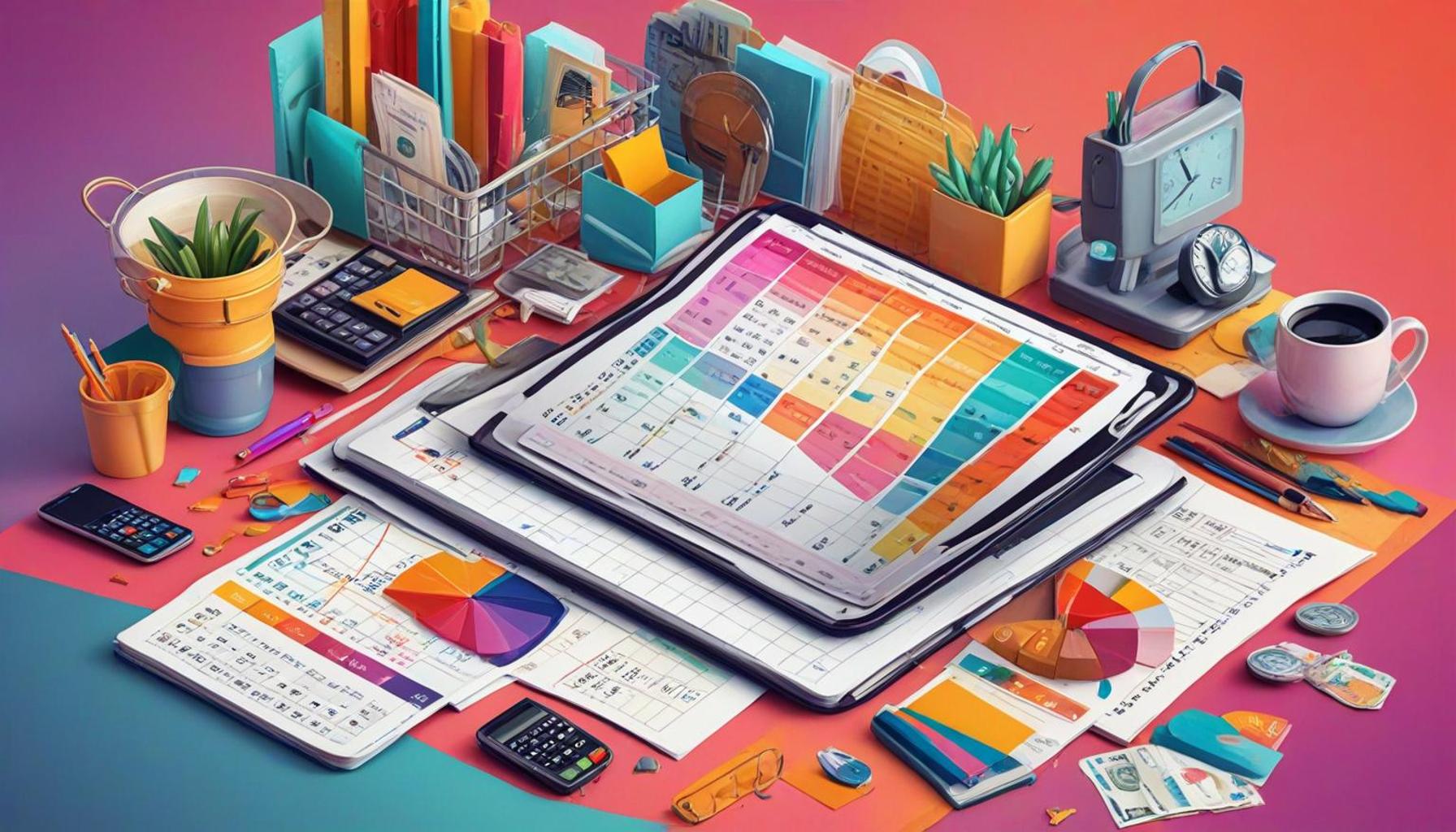Planning Large Purchases: How to Align Your Goals with Your Personal Budget

Understanding the Basics of Large Purchases
Making a large purchase can be an exciting yet daunting experience. Whether you’re considering buying a new car, a house, or even high-end electronics, it’s crucial to approach the process with careful planning. The stakes are often high, and the implications of such purchases can affect your financial health for years to come.
To ensure your purchase aligns with your financial goals, follow these key steps:
- Identify Your Needs: It’s essential to differentiate between what you truly need versus what you merely want. For example, if you’re in the market for a vehicle, consider whether you need a spacious SUV for family travel or a fuel-efficient sedan for daily commuting. Drafting a list of non-negotiable features, such as safety ratings or technology options, can help clarify your priorities.
- Set a Budget: Establishing a detailed budget that accounts for all your income and expenses is critical. Break down your finances by calculating how much you can allocate for your monthly bills, savings, and discretionary spending. Consider factors such as down payments, interest rates if taking a loan, and ongoing maintenance costs. If you plan to purchase a home, don’t forget to add in property taxes, homeowners insurance, and potential renovation costs, which can significantly impact your overall financial picture.
- Research Options: Undertaking thorough research allows you to investigate various products and services to find the best value. Websites like Edmunds for cars or Zillow for homes can offer valuable insights about prices, reviews, and market trends. Moreover, reading consumer reviews gives you first-hand accounts from existing users about the reliability and performance of the product.
Large purchases can have a significant impact on your finances, making it essential to make informed decisions. For instance, buying a home is not only about the mortgage; it also involves considering the neighborhood, resale value, and future developments in the area. Understanding these factors helps you gauge whether a purchase is an investment or a potential financial drain.
Having a well-structured plan allows you to enjoy your purchases without the stress of financial strain. Utilizing tools like personal finance apps can make budgeting easier and provide insights that guide your purchasing decisions. Additionally, consider consulting with a financial advisor if you’re making a particularly high-stakes investment.
In the coming sections, we will explore practical strategies for aligning your spending habits with your financial goals. By understanding the process and following these steps, you can make confident decisions that fit within your personal budget, setting yourself up for long-term financial success.
DISCOVER MORE: Click here for easy steps to get your Oportun loan approved
Assessing Your Financial Health
Before diving into large purchases, it’s imperative to take a deep look at your current financial situation. This assessment provides clarity and sets the stage for making well-informed decisions. Here are some steps to help you evaluate your financial health:
- Review Your Income: Start by determining your total monthly income. This amount should include your salary, bonuses, rental income, or any side hustles. Understanding how much money you bring home is foundational in planning for expenses.
- Analyze Your Expenses: Next, track and categorize your monthly expenses. Break them into fixed expenses, such as rent or mortgage payments and utilities, and variable expenses like groceries or dining out. Look for trends and pinpoint areas where you can cut back. This exercise will give you a clearer picture of available funds.
- Evaluate Your Debt: Review any existing debts, including student loans, credit cards, and personal loans. Understanding your total debt load and monthly payment obligations is crucial in assessing how much you can realistically budget for a new purchase.
- Examine Your Savings: Lastly, take stock of your savings and investments. This includes savings accounts, retirement accounts, and other investments. Knowing how much liquid cash you have available, and what is earmarked for future goals can help inform your purchasing decisions.
Once you have a comprehensive picture of your financial health, you’ll be in a better position to determine how much you can afford to spend on a large purchase. For instance, if you’ve identified that you can comfortably allocate a certain amount from your monthly budget toward saving for a new car, you can begin to set realistic purchasing goals accordingly.
Understanding your financial health not only helps to prevent overspending but also ensures that you’ll remain financially stable after making your large purchase. This is especially important because many large purchases come with ongoing costs. For example, owning a car means budgeting for insurance, fuel, and maintenance, while a new home often brings along property taxes, repairs, and homeowner’s association fees.
As you work out your budget for upcoming expenses, consider engaging with budgeting tools or apps that can help streamline this process. These resources can simplify tracking your income and outgoings, making it easier to visualize your financial situation. Additionally, don’t hesitate to seek advice from financial professionals if you feel overwhelmed; they can offer tailored insights and guidance based on your unique circumstances.
In the next section, we will delve deeper into creating a realistic budget for your large purchase, emphasizing the significance of balancing your desires with your financial capabilities.
DISCOVER MORE: Click here to learn how to apply
Creating a Realistic Budget
With a clear understanding of your financial health, the next step in planning your large purchase is to create a realistic budget. This budget serves as a roadmap, helping you to allocate your funds wisely and align your spending habits with your financial goals. Here’s how to construct a budget that meets your needs:
- Set a Target Amount: Begin by determining how much you need for your large purchase. Whether it’s a new car, a home, or a major appliance, researching the average costs in your area can provide you with a realistic target amount. For example, if you’re looking for a reliable used car, gathering information from online platforms like Kelley Blue Book can help you set an appropriate budget.
- Timeframe for Saving: Next, establish a timeframe within which you would like to make the purchase. This timeframe will help you calculate how much you need to save each month to reach your target amount. If you aim to buy a new refrigerator priced at $1,200 within a year, you’ll need to save approximately $100 monthly. This quantification simplifies the process and makes your goal feel attainable.
- Incorporate Additional Costs: It’s vital to consider not just the purchase price, but also any additional costs that may arise. These can include taxes, delivery fees, warranties, or installation costs. For instance, if you’re buying a new home, remember to factor in closing costs and inspections into your financial plan. Understanding these associated costs will help you avoid surprises down the line.
- Adjusting Your Budget: If your current income or expenses do not allow you to save enough for your goal, evaluate your budget for areas to adjust. Consider cutting back on discretionary spending, such as dining out or entertainment. For instance, foregoing takeout meals a couple of times a week can free up additional funds that can go directly toward your savings.
Additionally, thinking creatively about your savings can be beneficial. For example, consider setting up a dedicated savings account specifically for your large purchase. This not only keeps your funds organized but can often yield interest, which helps grow your savings slightly over time.
Utilizing Budgeting Tools and Techniques
In today’s digital age, there are numerous budgeting tools and apps available to streamline the budgeting process. Apps like Mint, You Need A Budget (YNAB), or EveryDollar can help track your spending, set goals, and visually represent your financial progress. Setting reminders for monthly savings transfers can also help keep you on track.
Moreover, practicing budgeting techniques such as the 50/30/20 rule can simplify your approach. This rule suggests allocating 50% of your income to needs, 30% to wants, and 20% to savings and debt repayment. By adhering to this guideline, you may find it easier to manage your finances while making room for your large purchase goals.
Finally, consider periodically reviewing and adjusting your budget. Life changes, such as a new job or unexpected expenses, will affect your financial landscape. Regularly revisiting your budget will ensure that your savings practices remain aligned with your purchasing goals. This proactive approach ensures that you remain flexible and responsive to your financial needs.
DISCOVER MORE: Click here to unlock the full guide
Conclusion
In conclusion, planning for large purchases is a strategic process that requires careful consideration and alignment with your personal budget. By taking the time to assess your financial situation, you can create a solid foundation for your budgeting efforts. Incorporating a realistic budget allows you to set achievable target amounts and timeframes, ensuring that your savings efforts are intentional and focused. Remember, additional costs associated with the purchase are just as important as the initial price; failing to account for these could derail your plans.
Utilizing budgeting tools and methodologies, such as apps and the 50/30/20 rule, can enhance your ability to track progress and maintain discipline in your spending. Regularly reviewing your budget and making necessary adjustments can safeguard against unexpected expenses and shifts in your financial status. Moreover, whether you’re saving for a car or a home, the discipline of adjusting your lifestyle can create significant benefits.
Ultimately, the act of planning and saving for large purchases not only enables you to reach your financial goals but also fosters a sense of accomplishment and confidence in managing your finances. Embrace these practices, remain flexible in your approach, and soon you’ll find that aligning your goals with your budget becomes a rewarding part of your financial journey.


